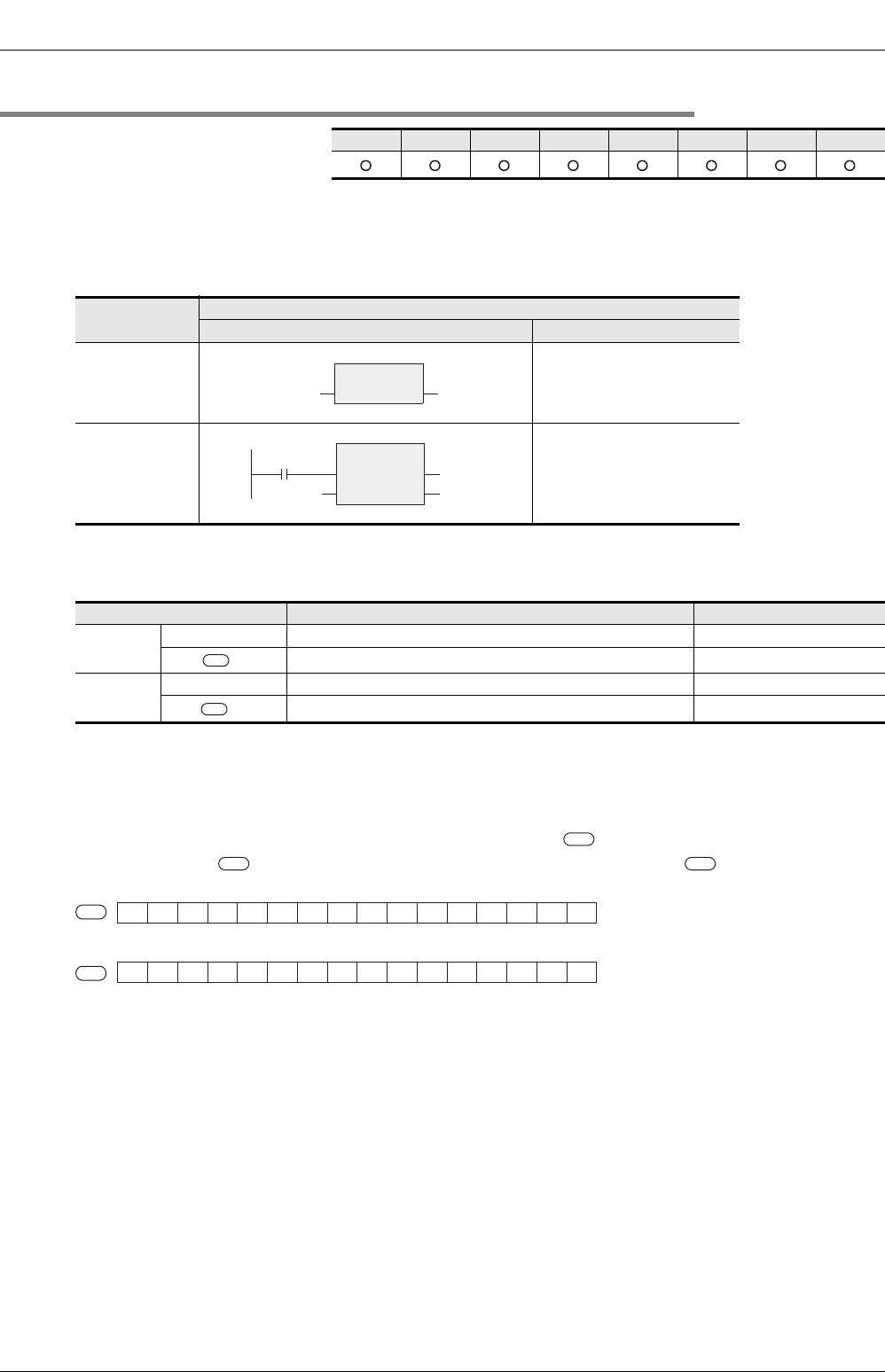
5.5 Standard Bitwise Boolean Functions
160
FXCPU Structured Programming Manual
(Application Functions)
5.5.4 NOT(_E)
Outline
This function obtains the logical negation of bits, and outputs it.
1. Format
*1. Output variable
2. Set data
In explanation of functions, I/O variables inside ( ) are described.
Explanation of function and operation
This function obtains the logical negation using each bit of bit/word [unsigned]/bit string [16-bit]/double word
[unsigned]/bit string [32-bit] data stored in a device specified in , and outputs the operation result to a
device specified in using the data type of data stored in a device specified in .
Example: When the data type is word [unsigned]/bit string [16-bit]
Cautions
1) Use the function having "_E" in its name to connect a bus.
2) When handling 32-bit data in structured programs, you cannot specify 16-bit devices directly, different
from simple projects. Use labels when handling 32-bit data.
You can specify 32-bit counters directly, however, because they are 32-bit devices.
Use global labels when specifying labels.
FX3U(C) FX3G FX2N(C) FX1N(C) FX1S
FX
U
/FX
2C
FX0N FX0(S)
Function name
Expression in each language
Structured ladder ST
NOT
NOT(_IN);
Example:
M10:=
NOT(M0);
NOT_E
NOT_E(EN,_IN,Output label);
Example:
NOT_E(X000,M0,M10);
Variable Description Data type
Input
variable
EN Execution condition Bit
_IN ( )
Device used to obtain the logical negation ANY_BIT
Output
variable
ENO Execution status Bit
*1 ( )
Device which will store the operation result ANY_BIT
NOT
M10_INM0 *1
NOT_E
EN ENO
*1
M10
X000
M0
_IN
s
d
s
d s
0110101100001111
1001010011110000
Logical negation
d
s


















